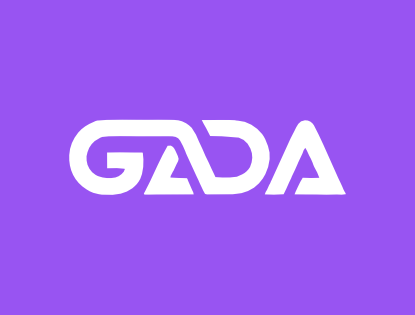FIRST STEPS IN OVERCOMING FOOD ADDICTION
Overcoming a food addiction can be very challenging. However, some people find it helpful to write a list of pros and cons to understand how this process may affect them.
Pros: These may include
1. losing weight (if that is your goal),
2. living longer,
3. having more energy, and
4. feeling better every day.
Cons: These may include
1. being unable to eat ice cream with family,
2. no cookies during the holiday season, and 3. having to explain food choices.
Write everything down, no matter how peculiar or vain it may seem.
Then, compare the two lists and consider if it’s worth it.
If the answer is a resounding “yes,” be assured that it’s the right decision.
A few things can help prepare for giving up processed foods and make the transition easier:
Trigger foods: Write down a list of the foods that cause cravings. These are the trigger foods you can try to avoid.
Fast food restaurants:
Make a list of fast food restaurants that serve healthier foods and note which menu items suit you better. This may prevent a relapse when you’re hungry and not in the mood to cook.
What to eat: Think about what foods you can eat so you’re prepared to make dietary changes.
Preferably, choose healthier foods that you like and already eat regularly.
Pros and cons:
Consider making several copies of the pro-and-con list. Keep a copy in the kitchen, glove compartment, and purse or wallet.
Overcoming a food addiction is difficult. Adding hunger and restrictions to the mix is likely to make things harder.
Consult with a nutrition or healthcare professional to assist you in making a plan.
Food addiction is a difficult thing to overcome alone, and the right kind of support can be very helpful.
After taking these preparatory steps, set a date in the near future — like the coming weekend — from which point you won’t touch the addictive trigger foods again.
Overcoming a food addiction can be very challenging. However, some people find it helpful to write a list of pros and cons to understand how this process may affect them.
Pros: These may include
1. losing weight (if that is your goal),
2. living longer,
3. having more energy, and
4. feeling better every day.
Cons: These may include
1. being unable to eat ice cream with family,
2. no cookies during the holiday season, and 3. having to explain food choices.
Write everything down, no matter how peculiar or vain it may seem.
Then, compare the two lists and consider if it’s worth it.
If the answer is a resounding “yes,” be assured that it’s the right decision.
A few things can help prepare for giving up processed foods and make the transition easier:
Trigger foods: Write down a list of the foods that cause cravings. These are the trigger foods you can try to avoid.
Fast food restaurants:
Make a list of fast food restaurants that serve healthier foods and note which menu items suit you better. This may prevent a relapse when you’re hungry and not in the mood to cook.
What to eat: Think about what foods you can eat so you’re prepared to make dietary changes.
Preferably, choose healthier foods that you like and already eat regularly.
Pros and cons:
Consider making several copies of the pro-and-con list. Keep a copy in the kitchen, glove compartment, and purse or wallet.
Overcoming a food addiction is difficult. Adding hunger and restrictions to the mix is likely to make things harder.
Consult with a nutrition or healthcare professional to assist you in making a plan.
Food addiction is a difficult thing to overcome alone, and the right kind of support can be very helpful.
After taking these preparatory steps, set a date in the near future — like the coming weekend — from which point you won’t touch the addictive trigger foods again.
FIRST STEPS IN OVERCOMING FOOD ADDICTION
Overcoming a food addiction can be very challenging. However, some people find it helpful to write a list of pros and cons to understand how this process may affect them.
Pros: These may include
1. losing weight (if that is your goal),
2. living longer,
3. having more energy, and
4. feeling better every day.
Cons: These may include
1. being unable to eat ice cream with family,
2. no cookies during the holiday season, and 3. having to explain food choices.
Write everything down, no matter how peculiar or vain it may seem.
Then, compare the two lists and consider if it’s worth it.
If the answer is a resounding “yes,” be assured that it’s the right decision.
A few things can help prepare for giving up processed foods and make the transition easier:
Trigger foods: Write down a list of the foods that cause cravings. These are the trigger foods you can try to avoid.
Fast food restaurants:
Make a list of fast food restaurants that serve healthier foods and note which menu items suit you better. This may prevent a relapse when you’re hungry and not in the mood to cook.
What to eat: Think about what foods you can eat so you’re prepared to make dietary changes.
Preferably, choose healthier foods that you like and already eat regularly.
Pros and cons:
Consider making several copies of the pro-and-con list. Keep a copy in the kitchen, glove compartment, and purse or wallet.
Overcoming a food addiction is difficult. Adding hunger and restrictions to the mix is likely to make things harder.
Consult with a nutrition or healthcare professional to assist you in making a plan.
Food addiction is a difficult thing to overcome alone, and the right kind of support can be very helpful.
After taking these preparatory steps, set a date in the near future — like the coming weekend — from which point you won’t touch the addictive trigger foods again.



